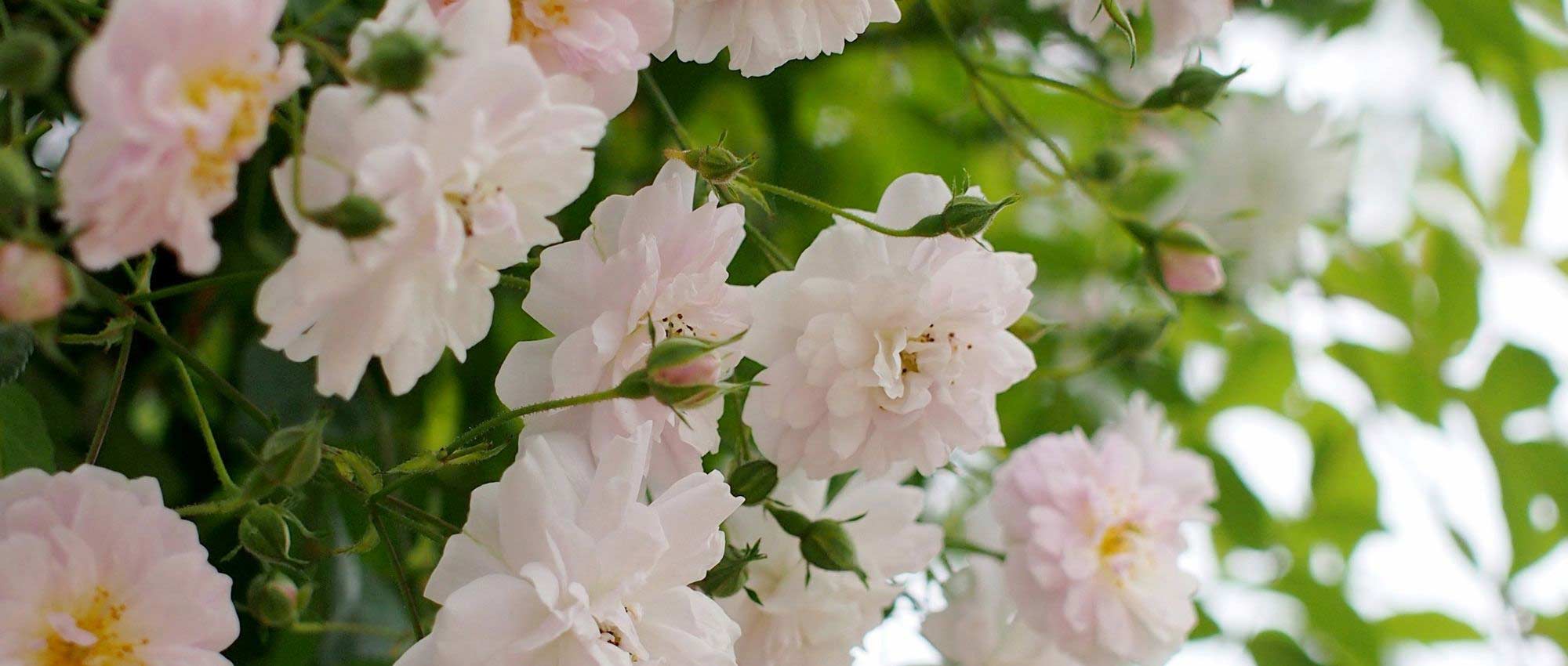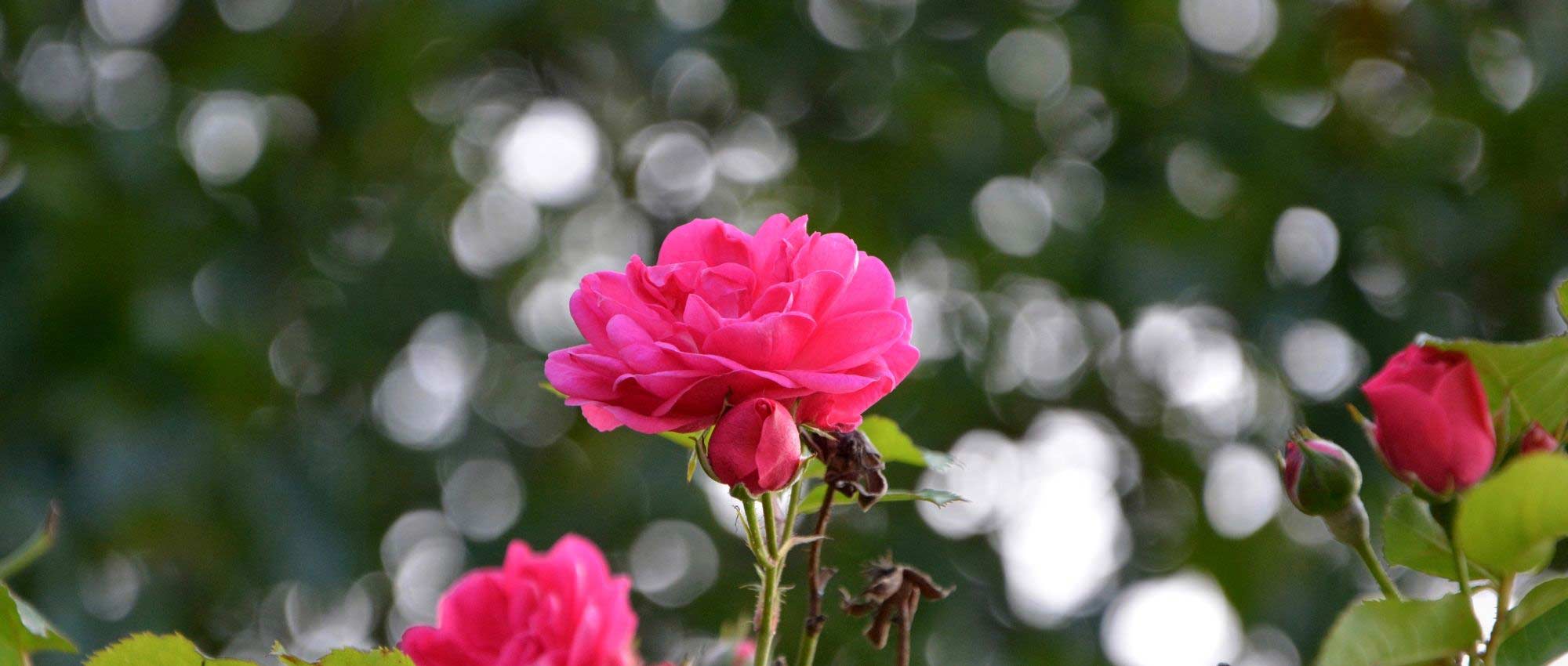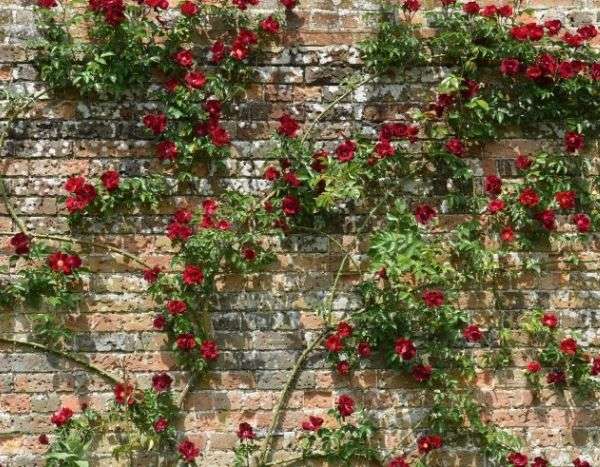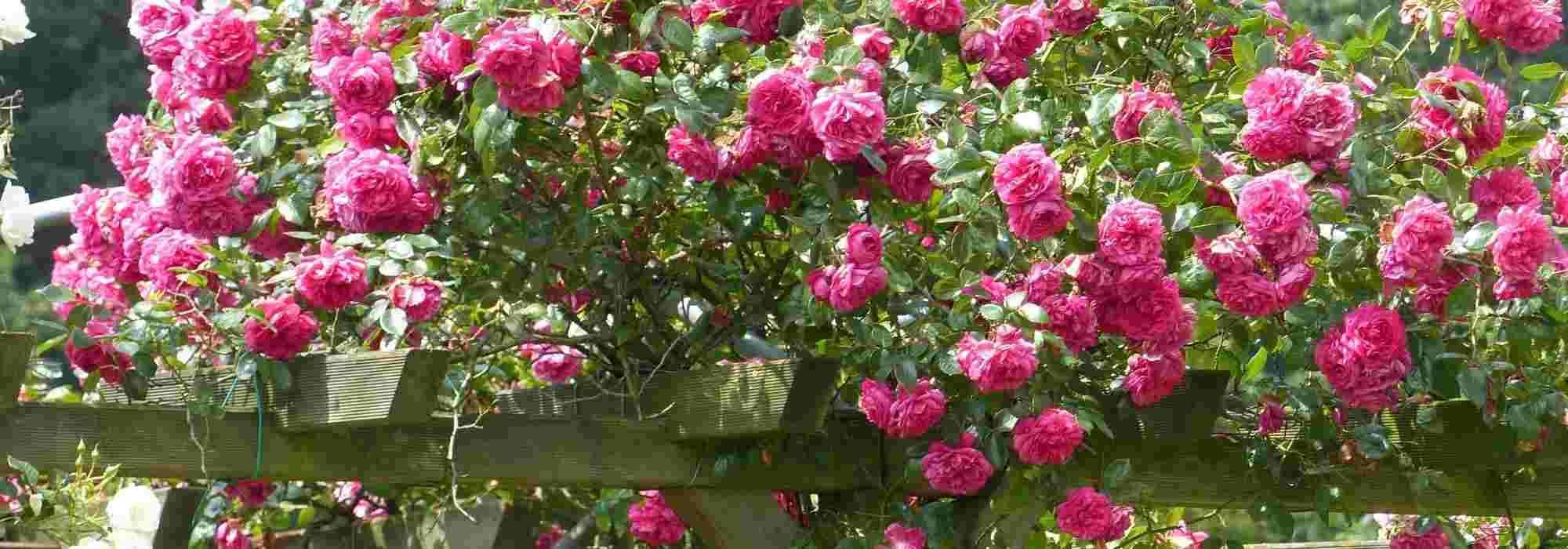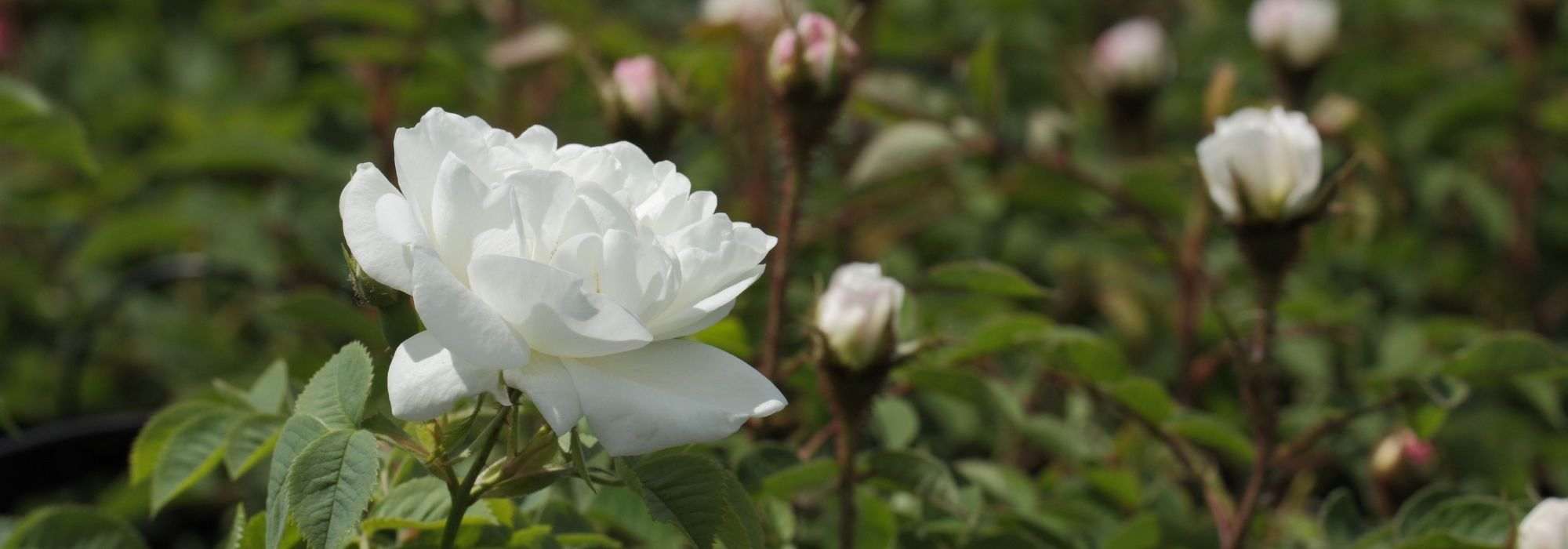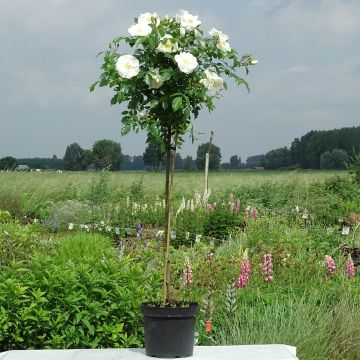

Rosa Sabrina - Climbing Rose
Rosa Sabrina - Climbing Rose
Rosa 'Meiptorius' SABRINA®
Climbing Rose
Thank you to the team (for order preparation and shipping), the rose bush I received appears healthy. Planted at the base of a wall, I'm now patiently waiting to see if it takes root...(or not?).
Thierry, 02/08/2025
Special offer!
Receive a €20 voucher for any order over €90 (excluding delivery costs, credit notes, and plastic-free options)!
1- Add your favorite plants to your cart.
2- Once you have reached €90, confirm your order (you can even choose the delivery date!).
3- As soon as your order is shipped, you will receive an email containing your voucher code, valid for 3 months (90 days).
Your voucher is unique and can only be used once, for any order with a minimum value of €20, excluding delivery costs.
Can be combined with other current offers, non-divisible and non-refundable.
We guarantee the quality of our plants for a full growing cycle, and will replace at our expense any plant that fails to recover under normal climatic and planting conditions.


Description
The climbing rose Sabrina® captivates with its charm, generosity, and excellent health. This romantic small climber features soft pink, old-fashioned flowers, perfect for decorating small spaces. Its glossy foliage highlights the delicately ruffled flowers that bloom continuously from early summer until the first frosts. It is also a highly disease-resistant variety that requires minimal care. Whether adorning an arch, trellis, wall, or terrace, this graceful rose enhances any setting.
The climbing rose Sabrina® ‘Meiptorius’, created by Meilland in 2012, belongs to the group of modern climbing roses. This variety has been awarded several prestigious accolades, including a silver medal at the Baden-Baden competition in 2013 (Germany) and a gold medal at Hradec Králové in 2015 (Czech Republic). It also received the German ADR label in 2015, certifying its robustness and disease resistance.
The Sabrina® ‘Meiptorius’ rose exhibits vertical growth and long, flexible thorny stems. It reaches a height of around 1.70 m. Its quartered flowers, composed of 95 to 100 petals, display a soft pink hue with apricot tones at the centre. They measure 8-9 cm in diameter and are grouped in clusters of 3 to 7 flowers, sometimes more. The foliage, small and glossy, is naturally resistant to diseases. The perpetual flowering lasts from June until the first frosts. Although the fragrance of this rose is light, it enhances its charm. Its foliage is deciduous, absent in winter. During the growing season, it is dense and a glossy dark green.
The history of the climbing rose Sabrina® is marked by international recognition that highlights its many qualities and adaptability to various climates and growing conditions. Not very tall, it can be used as a climber or a free-standing bush, if pruned to control its height and encourage a denser habit. This rose gracefully adorns an arch or trellis but can also structure a flower bed as a flexible bush. You can pair it with a clematis ‘Princess Kate’ and a Décorosiers rose 'Opalia climber' to create an elegant, low-maintenance display.
Rosa Sabrina - Climbing Rose in pictures
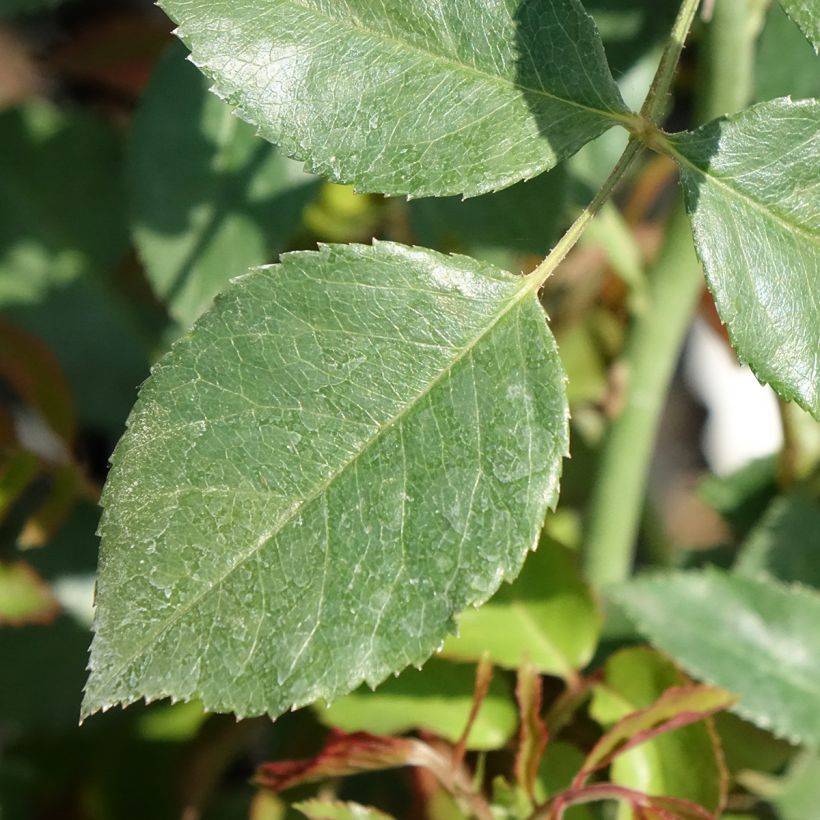

Plant habit
Flowering
Foliage
Botanical data
Rosa
'Meiptorius' SABRINA®
Rosaceae
Climbing Rose
Rosa SABRINA
Cultivar or hybrid
Planting and care
Plant your Climbing Rose Sabrina in a sunny position. Roses are tolerant but will not appreciate excessive lime and perform best in fertile, well-drained soil. They will adapt to any garden provided that the ground is well-prepared and sufficiently rich. To plant your rose, work the soil by breaking it up finely and adding an amendment such as dried blood or dehydrated horn at the bottom of the planting hole. Water generously after planting to eliminate air pockets. Water regularly for a few weeks to encourage rooting. At the end of winter, prune the oldest stems back to 3-5 buds above the ground (at the lowest point), choosing an outward-facing bud for a more elegant habit. Take this opportunity to remove any dead wood and unsightly branches. Prune at an angle above an bud. As flowering progresses, remove faded flowers to stimulate growth of new buds.
If planting a liana or climbing rose near a living tree, the rose's root system will compete with the well-established tree roots. To control watering, here’s a tip: plant the rose in a large container with the bottom removed, placed at the base of the tree. The tree roots won’t penetrate the container for at least a year. Remove the container after one year, for example by cutting one side, without disturbing the rose's root system. The rose will have had time to develop a deep root system and will be more resilient.
Roses often develop spots or look unsightly by late summer, but this does not affect their growth. These spots are not harmful to the rose; it’s a natural phenomenon. Follow all our advice to address this and read our article: Help: My Roses Have Spots
Planting period
Intended location
Care
Planting & care advice
-
, onOrder confirmed
Reply from on Promesse de fleurs
Similar products
Haven't found what you were looking for?
Hardiness is the lowest winter temperature a plant can endure without suffering serious damage or even dying. However, hardiness is affected by location (a sheltered area, such as a patio), protection (winter cover) and soil type (hardiness is improved by well-drained soil).

Photo Sharing Terms & Conditions
In order to encourage gardeners to interact and share their experiences, Promesse de fleurs offers various media enabling content to be uploaded onto its Site - in particular via the ‘Photo sharing’ module.
The User agrees to refrain from:
- Posting any content that is illegal, prejudicial, insulting, racist, inciteful to hatred, revisionist, contrary to public decency, that infringes on privacy or on the privacy rights of third parties, in particular the publicity rights of persons and goods, intellectual property rights, or the right to privacy.
- Submitting content on behalf of a third party;
- Impersonate the identity of a third party and/or publish any personal information about a third party;
In general, the User undertakes to refrain from any unethical behaviour.
All Content (in particular text, comments, files, images, photos, videos, creative works, etc.), which may be subject to property or intellectual property rights, image or other private rights, shall remain the property of the User, subject to the limited rights granted by the terms of the licence granted by Promesse de fleurs as stated below. Users are at liberty to publish or not to publish such Content on the Site, notably via the ‘Photo Sharing’ facility, and accept that this Content shall be made public and freely accessible, notably on the Internet.
Users further acknowledge, undertake to have ,and guarantee that they hold all necessary rights and permissions to publish such material on the Site, in particular with regard to the legislation in force pertaining to any privacy, property, intellectual property, image, or contractual rights, or rights of any other nature. By publishing such Content on the Site, Users acknowledge accepting full liability as publishers of the Content within the meaning of the law, and grant Promesse de fleurs, free of charge, an inclusive, worldwide licence for the said Content for the entire duration of its publication, including all reproduction, representation, up/downloading, displaying, performing, transmission, and storage rights.
Users also grant permission for their name to be linked to the Content and accept that this link may not always be made available.
By engaging in posting material, Users consent to their Content becoming automatically accessible on the Internet, in particular on other sites and/or blogs and/or web pages of the Promesse de fleurs site, including in particular social pages and the Promesse de fleurs catalogue.
Users may secure the removal of entrusted content free of charge by issuing a simple request via our contact form.
The flowering period indicated on our website applies to countries and regions located in USDA zone 8 (France, the United Kingdom, Ireland, the Netherlands, etc.)
It will vary according to where you live:
- In zones 9 to 10 (Italy, Spain, Greece, etc.), flowering will occur about 2 to 4 weeks earlier.
- In zones 6 to 7 (Germany, Poland, Slovenia, and lower mountainous regions), flowering will be delayed by 2 to 3 weeks.
- In zone 5 (Central Europe, Scandinavia), blooming will be delayed by 3 to 5 weeks.
In temperate climates, pruning of spring-flowering shrubs (forsythia, spireas, etc.) should be done just after flowering.
Pruning of summer-flowering shrubs (Indian Lilac, Perovskia, etc.) can be done in winter or spring.
In cold regions as well as with frost-sensitive plants, avoid pruning too early when severe frosts may still occur.
The planting period indicated on our website applies to countries and regions located in USDA zone 8 (France, United Kingdom, Ireland, Netherlands).
It will vary according to where you live:
- In Mediterranean zones (Marseille, Madrid, Milan, etc.), autumn and winter are the best planting periods.
- In continental zones (Strasbourg, Munich, Vienna, etc.), delay planting by 2 to 3 weeks in spring and bring it forward by 2 to 4 weeks in autumn.
- In mountainous regions (the Alps, Pyrenees, Carpathians, etc.), it is best to plant in late spring (May-June) or late summer (August-September).
The harvesting period indicated on our website applies to countries and regions in USDA zone 8 (France, England, Ireland, the Netherlands).
In colder areas (Scandinavia, Poland, Austria...) fruit and vegetable harvests are likely to be delayed by 3-4 weeks.
In warmer areas (Italy, Spain, Greece, etc.), harvesting will probably take place earlier, depending on weather conditions.
The sowing periods indicated on our website apply to countries and regions within USDA Zone 8 (France, UK, Ireland, Netherlands).
In colder areas (Scandinavia, Poland, Austria...), delay any outdoor sowing by 3-4 weeks, or sow under glass.
In warmer climes (Italy, Spain, Greece, etc.), bring outdoor sowing forward by a few weeks.

































